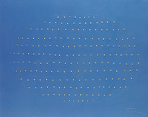Abstract
The essay reconsiders in a broader framework the theme of translatio studii already studied by Etienne Gilson. This broader context moves from the ancient biblical model (Daniel’s dream) to the sketch of a progressive understanding of historical events drawn from the theories concerning the succession of earthly kingdoms and their eras, derived from Roman historical thought. In the Early Middle Ages this idea was interpreted in a contradictory and even negative way, since Christian thought tended to reduce the autonomy of human history as governed by its own principles. However, after the experience of the Carolingian Empire the theory of the succession of kingdoms was revived. It was fully developed in France in the following centuries, in order to exalt the French kingdom as taking up the legacy of Greek and Roman civilization. This interpretation had strong nationalistic connotations, which were opposed by the great cultural utopia of the Italian humanism and its ‘dream’ (as Rico called it), and its greatest and most tireless interpreter, Petrarch.Except where otherwise noted, the content of this site is licensed under a Creative Commons Attribution-ShareAlike 4.0 International (CC BY-SA 4.0).
Authors retain copyright of their work. The CC BY-SA 4.0 licence allows readers to copy and redistribute the material in any medium or format, and to remix, transform, and build upon the material for any purpose, even commercially, as long as the original author is credited and as long as any works that are derived from the original are distributed under the same terms.
Metrics
Metrics Loading ...

